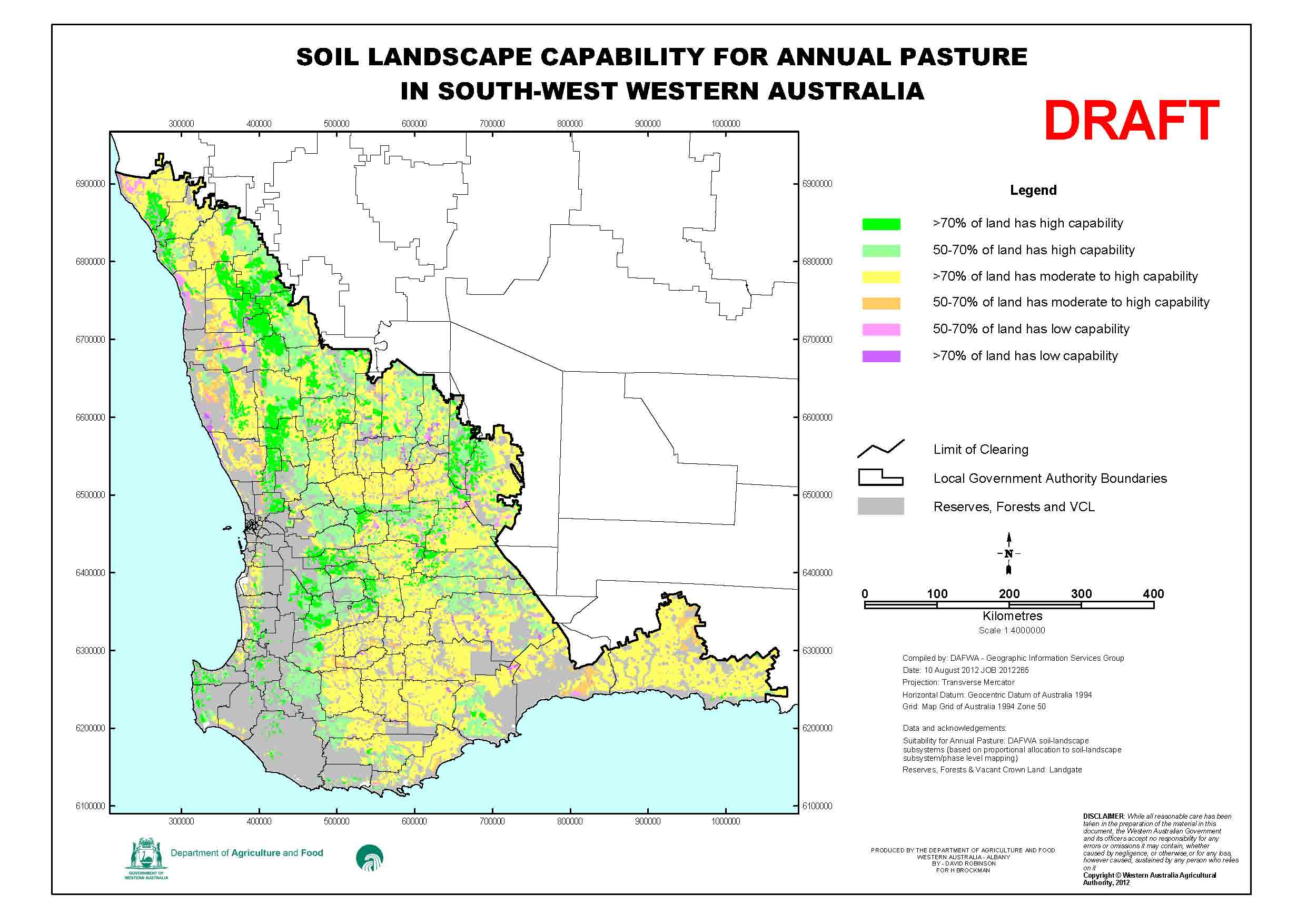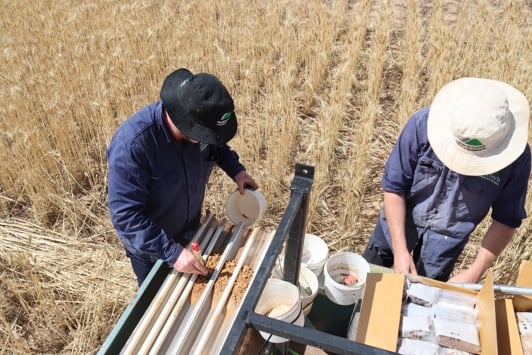It considers specific requirements of the land use and potential degradation risks. Land capability assessment is an important tool in Western Australia’s rural planning system.

What is land capability?
Land capability is the ability of land to support a given land use without causing land degradation. Assessment of land capability considers the specific requirements of the land use (e.g. rooting depth or soil water availability) and the risks of degradation associated with the land use (e.g. phosphorus export or wind erosion).
Land capability assessments are carried out in accordance with land evaluation standards. For more information, view the research report Land evaluation standards for land resource mapping: assessing land qualities and determining land capability in south-western Australia
Land capability assessments are a first step in assessing land suitability for a given use. 'Suitability' considers other factors such as economics, infrastructure requirements, labour access, water and energy access, conflicting and complementary land uses, and the policy framework.
Land capability mapping
The department of Primary Industries and Regional Development (DPIRD) has mapped land capability for 5 broad land uses (annual horticulture, dryland cropping, perennial horticulture, grazing and vineyards) for the south-western agricultural area of Western Australia. These maps can be viewed through our natural resources mapping portal, NRInfo.
Why we use land capability assessment
Land capability assessment is an important prerequisite for rural land-use planning in Western Australia
We use the land capability assessment method to assess land suitability for existing and potential agricultural and non-agricultural uses. Land-use capability assessment identifies possible physical, chemical and degradation constraints to land use on soils and landscapes. This information is then used by planners, managers and advisers, together with suitability criteria, to improve development planning and management.
Capability ratings
The department uses 5 land capability classes specific to the land use being considered. This means that the same area could be classed as capability class 1 for one use, and class 5 for another use.
Most properties consist of land with a range of capability classes.
- Class 1: very few physical limitations present and easily overcome; risk of land degradation is negligible.
- Class 2: minor physical limitations affecting either productive land use or risk of degradation; limitations can be overcome by careful planning.
- Class 3: moderate physical limitations significantly affecting productive land use or risk of degradation; careful planning and conservation measures are required.
- Class 4: high degree of physical limitation not easily overcome by standard development techniques or resulting in high risk of degradation; extensive conservation measures and careful ongoing management are required.
- Class 5: severe limitations; use is usually prohibitive in terms of development costs or the associated risk of degradation.
Using these capability ratings
Developing or purchasing land for a particular purpose requires a balance between capability (productivity and degradation risks) and suitability (the cost of land, water supplies, proximity to market and any extra costs or management required to overcome physical limitations).
Where the land is already owned, the first choice should be land rated as capability class 1 or 2 for the intended purpose. Class 3 land might have lower productivity and profit but might be worthwhile developing if the return on investment is high enough. Class 4 land is likely to be a high risk for that use, and we recommend alternative uses.
The same reasoning applies to purchasing land but you will also need to consider land costs, water supplies, proximity to market and any extra costs or management required to overcome physical limitations.
As a guide, limitations quickly become prohibitive for dryland cropping, which uses large areas of land. However, a high initial investment to overcome limitations may be feasible for some intensive horticulture activities.
In general, class 5 land is not suitable for the proposed use. In the long term, the costs involved in sustainably managing this land are unlikely to be offset by the returns from your enterprise.

